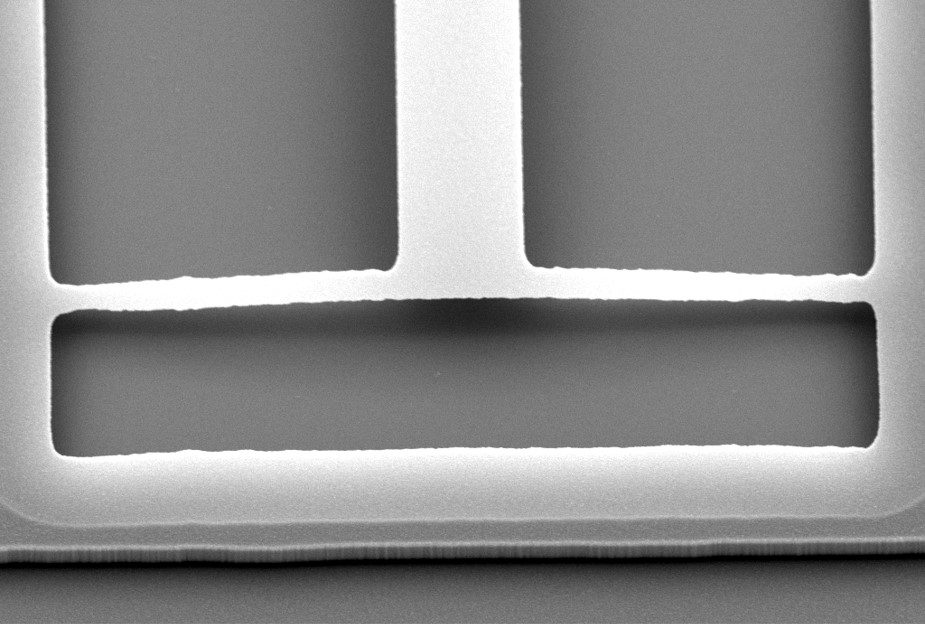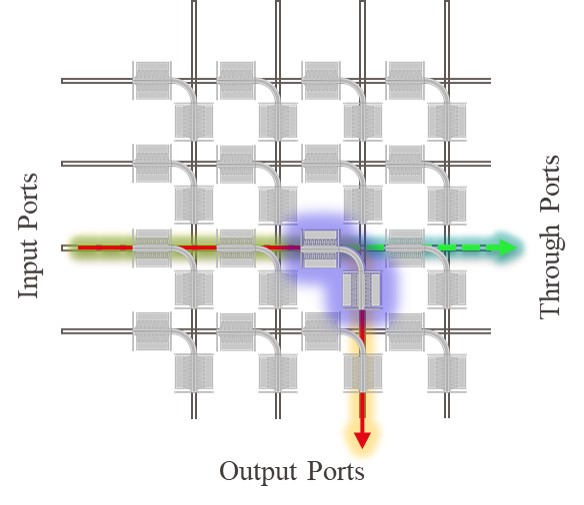Silicon Photonics is widely recognized as an enabling technology, and has received much attention recently, to address the high-speed communication requirements in data centers. In particular, optical switching is currently considered for future data center architectures, to potentially reduce the power-consumption of electrical switches. Currently available solutions for optical switches include MEMS tilting mirrors or micro-positioning of optical fibers, yet further miniaturization is possible by moving towards photonic integrated circuits. Previous demonstrations of switch arrays exploit MEMS for reconfiguring the optical connections at high port counts and have demonstrated the tremendous potential of this technology (Seok et al., Optica, 3, 1, 64-70, 2016).
In this project, we aim at exploiting mechanical bistability for silicon photonic MEMS switches. It is the particularity of this mechanism to have zero power consumption to hold any given configuration of connectivity of the switch matrix, which can lead to an overall drastically reduced power consumption for the optical switch. We employ advanced simulation techniques to develop suitable switch designs, we fabricate the devices at the EPFL Center for Micro- and Nanotechnology (CMi), and we perform electro-opto-mechanical characterization at the laboratories of the Quack research group at EPFL.

Cross sectional view of the bistable switch design.


Demonstration of fabrication of the proposed bistable structure.

Example of application of the bistable switch in a 4×4 switch matrix.
Publications
- Sattari, H., Toros, A., Graziosi, T. and Quack, N., 2019, March. Bistable silicon photonic MEMS switches. In MOEMS and Miniaturized Systems XVIII (Vol. 10931, p. 109310D). International Society for Optics and Photonics.
- Keynote Talk at ICO24 by Niels Quack, Tokyo, JP, 24 Aug 2017
Funding
The project kicked off in September 2017 and it spans for 3 years. The project is funded by the Hasler Foundation and the Swiss National Science Foundation through grant SNSF Project – 170759

